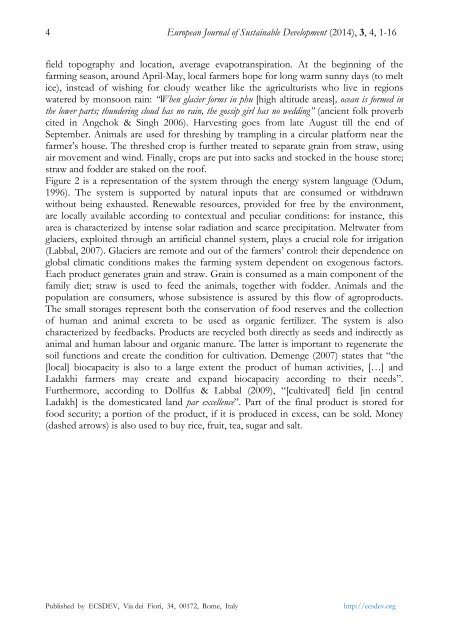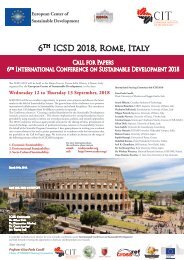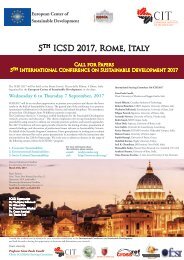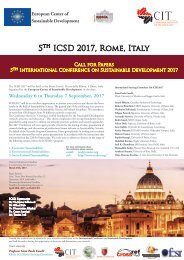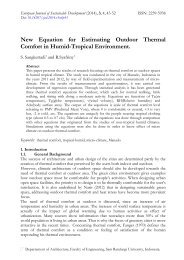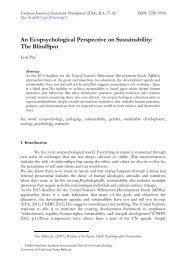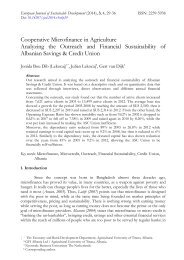Emergy evaluation of a traditional farming system. Case study: Leh District (Ladakh - Indian Trans-Himalaya)
Ladakh traditional farming system has been included on the F.A.O. list of possible “Globally Important Agricultural Heritage Systems”, worthy of being preserved and conserved. The paper describes and assesses cultivation practices in a typical familymanaged farm, located in central Ladakh, analysing how natural resources are exploited, conserved and recycled. Emergy evaluation, an environmental accounting methodology, has been applied to evaluate and compare five staple crop productions: barley, wheat, pea, mustard, and fodder alfalfa. Unit Emergy Values of products (UEV, emergy per unit product, a measure of the environmental production cost) are calculated, taking into account the inputs to production such as water from glaciers, soil fertility, human and animal labour, and more. Results show that the traditional agricultural practices in Ladakh, completely supported by renewable flows, are efficient in the use of local resources. In fact, the UEVs of agroproducts are similar to those of analogous products of conventional agriculture (e.g. 5.27E+05 and 6.64E+05 semj/J for barley and wheat in Ladakh, respectively; 7.37E+05 semj/J for corn in USA), though the inputs of Ladakh agriculture are strongly limited in type and quantity. At the same time, local farmers can create, maintain and rebuild soil functions whose UEV is 1.62E+07 semj/J. Keywords: Ladakh, agrosystem, emergy, environment, sustainability
Ladakh traditional farming system has been included on the F.A.O. list of possible “Globally Important Agricultural Heritage Systems”, worthy of being preserved and
conserved. The paper describes and assesses cultivation practices in a typical familymanaged farm, located in central Ladakh, analysing how natural resources are exploited, conserved and recycled. Emergy evaluation, an environmental accounting methodology, has been applied to evaluate and compare five staple crop productions: barley, wheat, pea, mustard, and fodder alfalfa. Unit Emergy Values of products (UEV, emergy per unit product, a measure of the environmental production cost) are calculated, taking into account the inputs to production such as water from glaciers, soil fertility, human and
animal labour, and more. Results show that the traditional agricultural practices in Ladakh,
completely supported by renewable flows, are efficient in the use of local resources. In fact, the UEVs of agroproducts are similar to those of analogous products of conventional agriculture (e.g. 5.27E+05 and 6.64E+05 semj/J for barley and wheat in Ladakh, respectively; 7.37E+05 semj/J for corn in USA), though the inputs of Ladakh agriculture are strongly limited in type and quantity. At the same time, local farmers can create, maintain and rebuild soil functions whose UEV is 1.62E+07 semj/J.
Keywords: Ladakh, agrosystem, emergy, environment, sustainability
You also want an ePaper? Increase the reach of your titles
YUMPU automatically turns print PDFs into web optimized ePapers that Google loves.
4 European Journal <strong>of</strong> Sustainable Development (2014), 3, 4, 1-16<br />
field topography and location, average evapotranspiration. At the beginning <strong>of</strong> the<br />
<strong>farming</strong> season, around April-May, local farmers hope for long warm sunny days (to melt<br />
ice), instead <strong>of</strong> wishing for cloudy weather like the agriculturists who live in regions<br />
watered by monsoon rain: “When glacier forms in phu [high altitude areas], ocean is formed in<br />
the lower parts; thundering cloud has no rain, the gossip girl has no wedding” (ancient folk proverb<br />
cited in Angchok & Singh 2006). Harvesting goes from late August till the end <strong>of</strong><br />
September. Animals are used for threshing by trampling in a circular platform near the<br />
farmer’s house. The threshed crop is further treated to separate grain from straw, using<br />
air movement and wind. Finally, crops are put into sacks and stocked in the house store;<br />
straw and fodder are staked on the ro<strong>of</strong>.<br />
Figure 2 is a representation <strong>of</strong> the <strong>system</strong> through the energy <strong>system</strong> language (Odum,<br />
1996). The <strong>system</strong> is supported by natural inputs that are consumed or withdrawn<br />
without being exhausted. Renewable resources, provided for free by the environment,<br />
are locally available according to contextual and peculiar conditions: for instance, this<br />
area is characterized by intense solar radiation and scarce precipitation. Meltwater from<br />
glaciers, exploited through an artificial channel <strong>system</strong>, plays a crucial role for irrigation<br />
(Labbal, 2007). Glaciers are remote and out <strong>of</strong> the farmers’ control: their dependence on<br />
global climatic conditions makes the <strong>farming</strong> <strong>system</strong> dependent on exogenous factors.<br />
Each product generates grain and straw. Grain is consumed as a main component <strong>of</strong> the<br />
family diet; straw is used to feed the animals, together with fodder. Animals and the<br />
population are consumers, whose subsistence is assured by this flow <strong>of</strong> agroproducts.<br />
The small storages represent both the conservation <strong>of</strong> food reserves and the collection<br />
<strong>of</strong> human and animal excreta to be used as organic fertilizer. The <strong>system</strong> is also<br />
characterized by feedbacks. Products are recycled both directly as seeds and indirectly as<br />
animal and human labour and organic manure. The latter is important to regenerate the<br />
soil functions and create the condition for cultivation. Demenge (2007) states that “the<br />
[local] biocapacity is also to a large extent the product <strong>of</strong> human activities, […] and<br />
<strong>Ladakh</strong>i farmers may create and expand biocapacity according to their needs”.<br />
Furthermore, according to Dollfus & Labbal (2009), “[cultivated] field [in central<br />
<strong>Ladakh</strong>] is the domesticated land par excellence”. Part <strong>of</strong> the final product is stored for<br />
food security; a portion <strong>of</strong> the product, if it is produced in excess, can be sold. Money<br />
(dashed arrows) is also used to buy rice, fruit, tea, sugar and salt.<br />
Published by ECSDEV, Via dei Fiori, 34, 00172, Rome, Italy<br />
http://ecsdev.org


